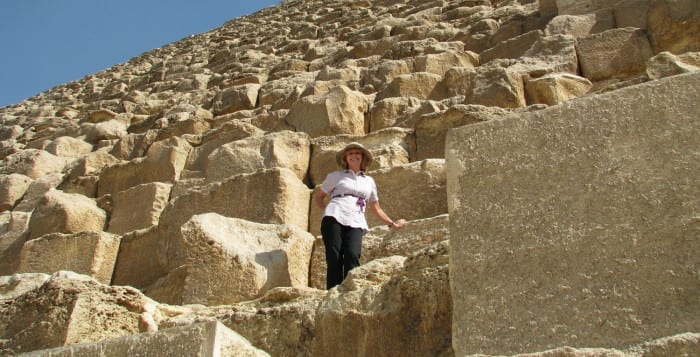If the smartest people in the world gathered in a room, they might struggle to collaborate. An Australian astrophysicist might have a different way of solving problems from the Spanish sociologist. That doesn’t even address language barriers.
Similar principles hold true for the world’s best super computers. While each may have an ability to perform numerous calculations, gather information, and extrapolate from patterns too complicated to discover with a pencil and paper, they can be limited in their ability to work together efficiently.
That’s where a leader in the field of parallel computing comes in. Barbara Chapman, who has been at the University of Houston since 1999, has taught rising stars in the field, written textbooks and enabled the combination of supercomputers to become more than the proverbial sum of their parts.
And, this week, she is bringing her talents to Long Island, where she’s starting the next step in her career as a professor of Applied Math and Statistics, and Computer Science at Stony Brook, as part of the Institute for Advanced Computational Science and as an affiliate at Brookhaven National Laboratory.
Calling Chapman a “pioneer in the world of parallel computing,” Sunita Chandrasekaran, who was a post-doctoral researcher in Chapman’s lab, predicted Chapman would “attract top graduate students from across the globe. Many students would love to do research under Chapman’s supervision.”
Lei Huang, an assistant professor in the computer science department at Prairie View A&M University in Texas, considers Chapman his “mentor,” and said she is “always patient with students,” making her a “valuable asset” to Stony Brook. Huang, who did his Ph.D. and worked as a post doc in Chapman’s lab, added that she proposed and implemented innovative language features to improve performance and productivity of programming on supercomputers.
Chapman, who grew up in New Zealand, said she left the more temperate region of Houston driven, in part, by the intelligence and personality of Robert J. Harrison, Stony Brook’s director for the Institute for Advanced Computational Science. Additionally, Chapman sees opportunities to work with local collaborators.
Chapman works to make it easier for scientists and other users to get computers to solve their problems and gain insights from massive amounts of data. She strives to get high-powered computers to work together efficiently.
Scientists need to give computers a way of telling the cores how to interact and collaborate. Dividing up the work and ensuring that these computers share data are among the challenges of her role.
The new Stony Brook scientist helped develop OpenMP, which can be used to program multicores and is an industry standard used in cell phones, among other things.
President Obama unveiled plans to build an exascale computer, which might be capable of performing a billion billion operations per second. Building this computer will have numerous challenges, including hardware, power, memory, data movement, resilience and programming.
Chandrasekaran, who recently joined the University of Delaware as an assistant professor, said software programming needs to be more intuitive, portable across platforms and adaptable without any compromise in performance. Chapman, she said, is a leader in these fields, bringing together national laboratories, vendors and academia.
As a part of a group of researchers asked to identify opportunities for collaborations between the United States and Egypt, Chapman also journeyed to Egypt. While it was a “wonderful experience,” Chapman said the efforts were put on hold indefinitely after the revolution.
Applications that exploit supercomputers range from astrophysics to the automotive industry to analyzing old texts, to determine if the works of classical scholars were written or translated by the same person, Chapman said.
Chapman and her colleagues work to design features to support the next generation of computers. In the next few years, Chapman expects computers to have more complex memory, while the cores will be more heterogeneous.
At the same time, hardware manufacturers are focused on green computing, enabling the same computing power while using less energy.
Chapman enjoys working in an academic setting, where she can inspire the next generation of computer scientists. She will start teaching at Stony Brook in 2016.
While Chapman’s work centers around helping computers get the most from their collaborations, she also believes the workforce would benefit from attracting, training and supporting people from a broader range of backgrounds, including African-Americans, Hispanics, and women.
“If we had a much more diverse group of people, how would our use of computers change?” she asks. “Would we find other uses of computers?”
Chapman is encouraged that her concern about diversity is a matter numerous people in Washington are discussing. “I chaired a small study on this last year for the Department of Energy,” she said. “There’s a lot of buy-in to the notion that it’s important to change that.”
Chapman said an early experience working with the National Aeronautics and Space Administration ignited her interest in computer science. She worked with people who were exploring what happens when a spacecraft re-enters Earth’s atmosphere. They were designing materials that are better able to withstand the heat and speed of returning to Earth.
“People can use machines for finding out what’s going on in the universe in the big picture,” she said. “That got me hooked.”
This version corrects the title of Sunita Chandrasekaran.





